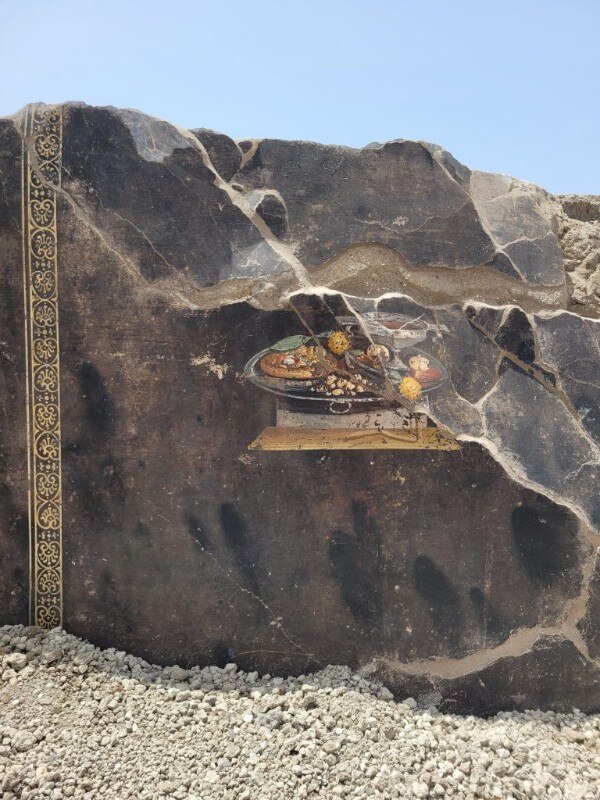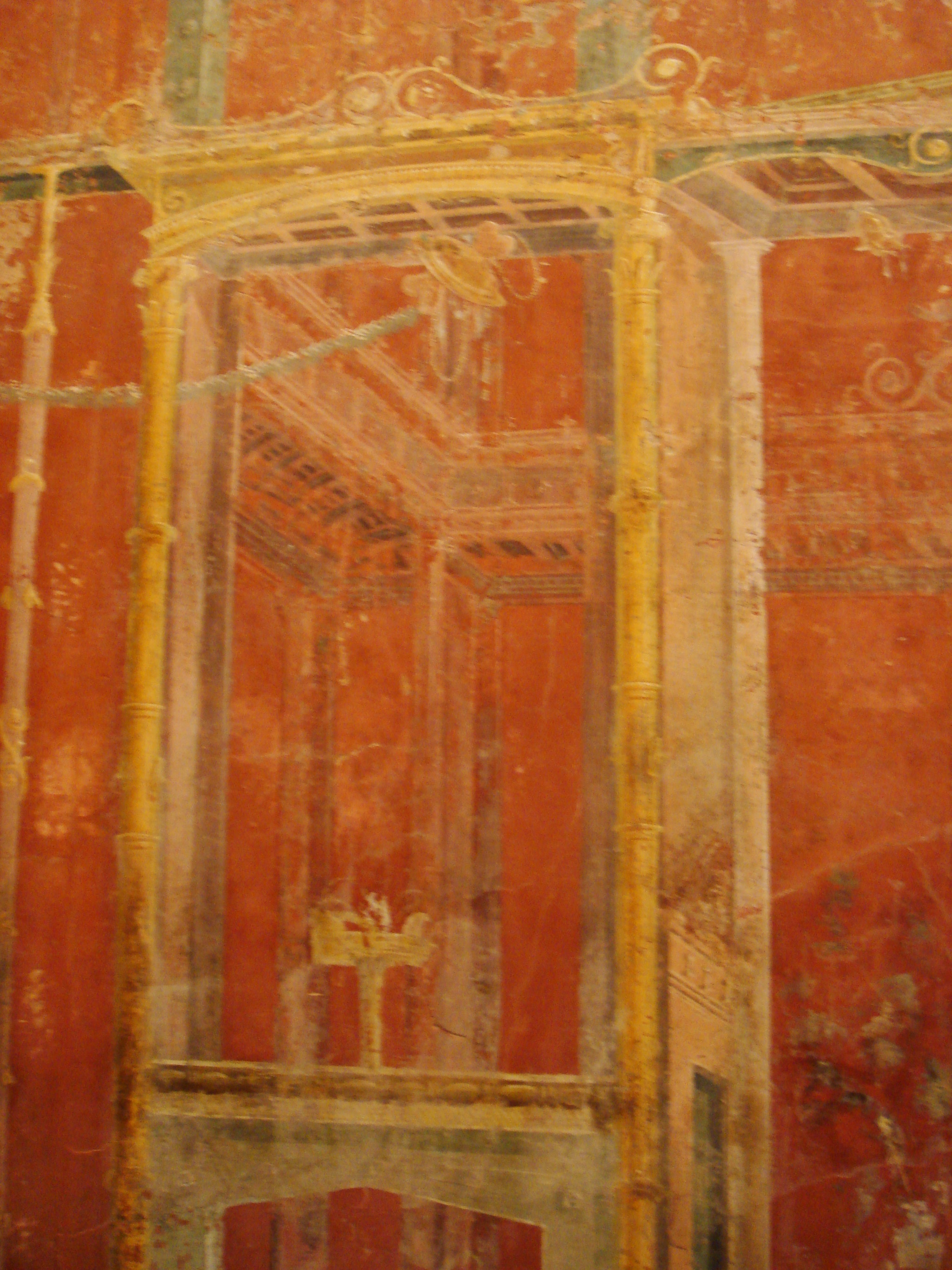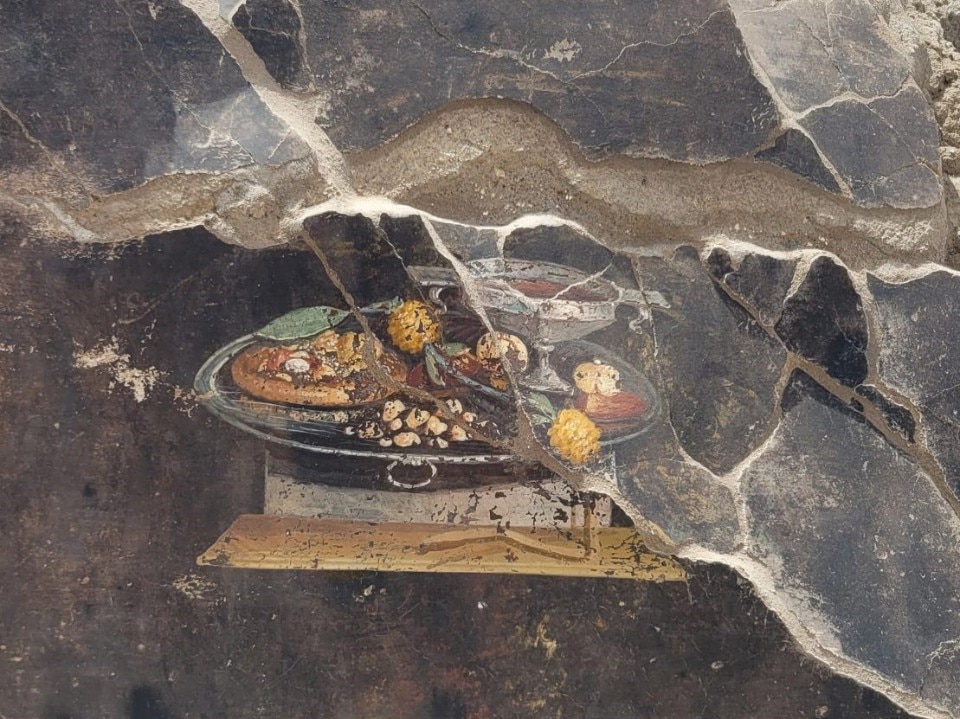“Pompeii amazes one by its narrowness and littleness, — confined streets, but perfectly straight, and furnished on both sides with a foot pavement; little houses without windows, the rooms being lit only by the doors, which opened on the atrium and the galleries. Even the public edifices, the tomb at the gate, a temple, and also a villa in its neighborhood, are like models and dolls’ houses, rather than real buildings. The rooms — corridors, galleries, and all — are painted with bright and cheerful colors, the wall-surfaces uniform; in the middle some elaborate painting (most of these have been removed); on the borders and at the corners, light, tasteful arabesques, terminating in the pretty figures of nymphs or children; while in others, from out of garlands of flowers, beasts, wild and tame, are issuing.” Johann Wolfgang von Goethe,
Johann Wolfgang von Goethe, Italian Journey.
We wonder what else Goethe would have written after the new discovery in Pompeii. Tireless work that of the professionals in one of the world’s largest and best-known archaeological sites that seems to continue to amaze in its every discovery. A fresco – dating back about two thousand years – depicts on the wall of an ancient Pompeian domus, once a bakery with an oven, a splendid still life: “Still life with Pizza.”
A glass of wine, a silver tray, a focaccia bread decorated and stuffed with a pomegranate, a date, and spices among beautiful ochre colors with dried fruits and an arbutus garland.

For critics, the discovery appears even more sensational since the focaccia bread depicted in the painting is most likely the ancestor of pizza. As explained by the director of the Pompeii Archaeological Park, Gabriel Zuchtriegel, “In addition to the precise identification of the foods represented we find in this fresco some themes from the Hellenistic tradition, later elaborated by authors of the Roman-Imperial period such as Virgil, Martial and Philostratus. I think of the contrast between a frugal and simple meal, hinting at a sphere between the bucolic and the sacred, on the one hand, and the luxury of silver trays and the refinement of artistic and literary representations on the other. How can we not think, in this regard, of pizza, which also began as a poor dish in southern Italy and has now conquered the world and is served even in starred restaurants.”
Pizza represents a true symbol of ‘Made in Italy’ that was dedicated to already in 2018 in New York for a real museum, Brooklyn’s MoPi. It hosted more than 25,000 people among truly unique installations such as a reproduction of Botticelli’s Venus biting into a slice of pizza while peeking out of a take-out box as opposed to the familiar seashell.

Pompeii teaches and amazes. In addition to debunking the myth that perspective is an invention of the master of Vicchio – better known as Giotto – since we find it among the frescoes of the ancient domus as a painting technique, it reveals that pizza is not an invention of the cook Raffaele Esposito for Queen Margherita of Savoy, Queen of Italy, but rather a dish, also from the Campania tradition, so well-known and poor that it was ‘advertised’ in an ancient Pompeian bakery.
Opening image: Pompeii, a new still life, excavations of Regio IX. Photo courtesy of MIC - Archaeological Park of Pompeii.


